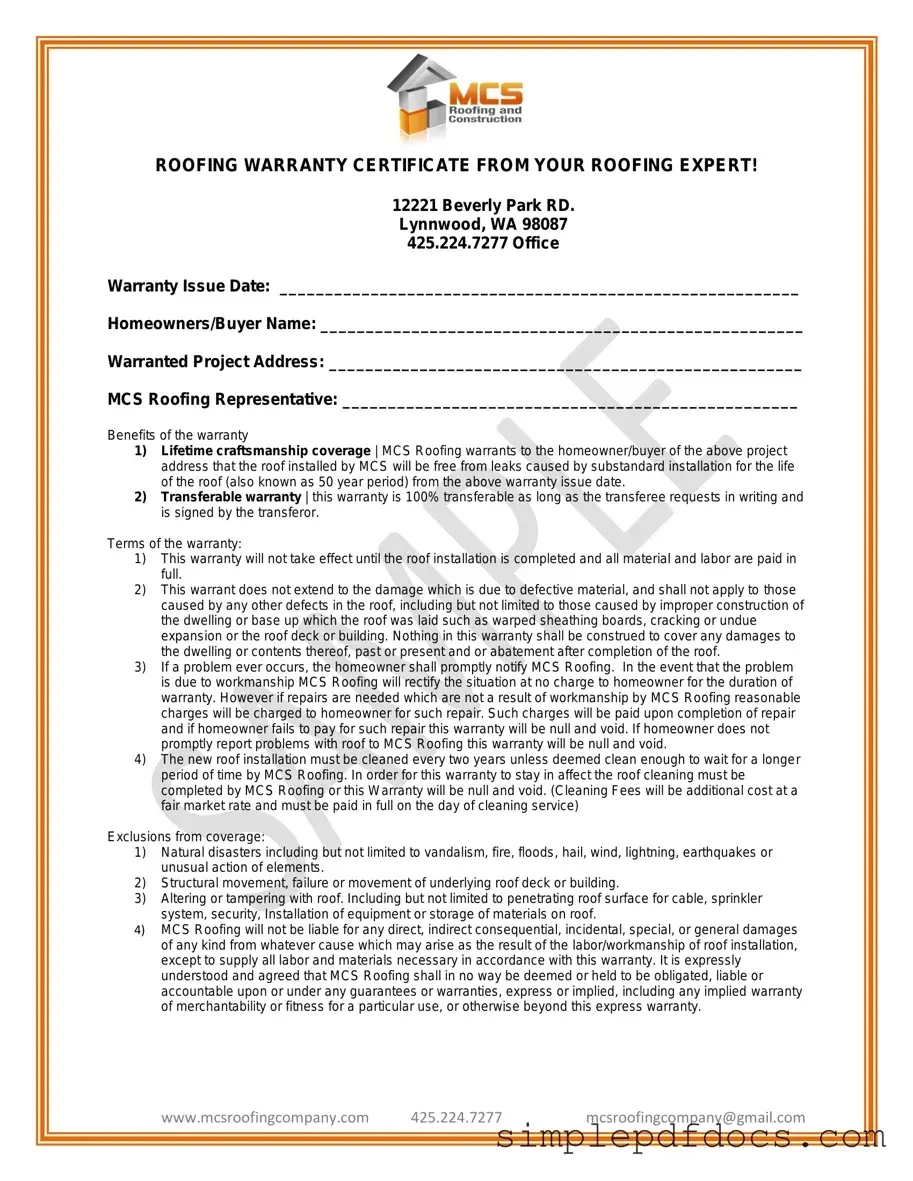Fill Your Roofing Warranty Certificate Form
The Roofing Warranty Certificate is a crucial document provided by roofing companies to assure homeowners of the quality and durability of their roof installation. This certificate outlines the terms of the warranty, including coverage for craftsmanship and the process for transferring the warranty to new owners. Understanding the details of this certificate can help homeowners protect their investment and ensure long-lasting performance of their roofing system.
Get Document Here
